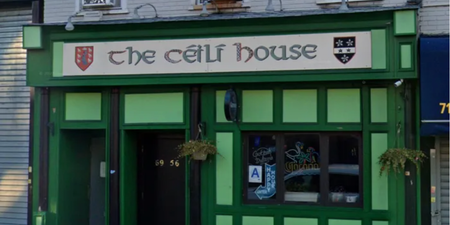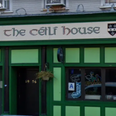Being lactose intolerant can sometimes be tough.
That’s because if you have it, you’ll know all about the unpleasant symptoms that can go with it… including bloating, nausea, cramps, and diarrhoea.
However, there are also a LOAD of myths and untruths surrounding the condition – misconceptions that can result in you choosing an unhealthy, unbalanced diet.
That and, of course, you don’t want to be missing out on the likes of your favourite foods, eating out, or… cake (because yes, most cake contains milk!).
Here, we examine five, all-too common misconceptions about lactose intolerance…

1) Lactose intolerance and a milk allergy is the same
Wrong; they are definitely not the same .
If you’re lactose intolerant, your body lacks the enzyme called lactase (which breaks down the lactose in milk) and this can result in symptoms such as nausea, cramps and bloating.
If you have a milk allergy your body mistakes the protein in milk as harmful, triggering an allergic reaction. The reaction can vary from mild symptoms such as rashes, hives and itching, to much more severe symptoms such as breathing-difficulties, wheezing, or even loss of consciousness.
While lactose intolerance is not life-threatening a milk allergy could trigger a very serious reaction, so get a proper diagnosis from your doctor.
2) Everyone’s symptoms are the same
Most people who are lactose intolerant work out through trial and error how much lactose they can tolerate or what they can and can’t eat. However, having the condition does not mean that you have a specific set of symptoms: symptoms can vary from mild to severe; it’s different for everyone.
Some people find that eating cheese or yoghurt (which have lower levels of lactose) is trouble-free, but downing a huge glass of milk may bring on a reaction. Others find that eating dairy as part of a meal (rather than on its own) eliminates any nasty symptoms.
In short, listen to your own body – you will know best how to manage your lactose intolerance.

3) You can’t eat dairy
Absolutely not! Gorging on dairy – or any food for that matter! – is never a good idea if you have the condition. But most people find they can consume lower-lactose dairy foods (such as cheese or yoghurt) without any issues.
And if, like most people, you can’t live without milk in your tea or coffee, or on cereal and in smoothies, don’t forget that lactose-free milk is a great option.
Avonmore Lactose Free Milk is made from regular cow’s milk that has had the lactose broken down – making it easier to digest.
This means you’re still getting the benefits of dairy (think calcium, protein and vitamins B2 and B12). Certainly, no one should cut out milk from their diet unless their doctor advises them to.

4) Lactose-free milk is heavily processed
Not true either. Avonmore Lactose Free milk is made with real cow’s milk, and tastes the same too – it’s just milk without the lactose! Here’s how it works: a lactase enzyme is added to the milk to break down the lactose and make it lactose-free.
Avonmore Lactose Free milk also has the same nutritional benefits as regular milk but with the added benefit of being fortified with vitamin D (to help you absorb all that calcium).

5) You can get calcium from other food anyway
Yes, calcium is contained in other food – including fish such as sardines or salmon, dark green veg, and tofu – but not necessarily in the same quantities as a glass of milk. For example, you would need to eat roughly 16 servings of broccoli a day to get your recommended daily amount of calcium.
Cow’s milk alternatives such as almond, coconut and soya ‘milk’ are popular at the moment – but these can vary quite considerably in terms of nutritional composition and can include added sugar and salt.

















































